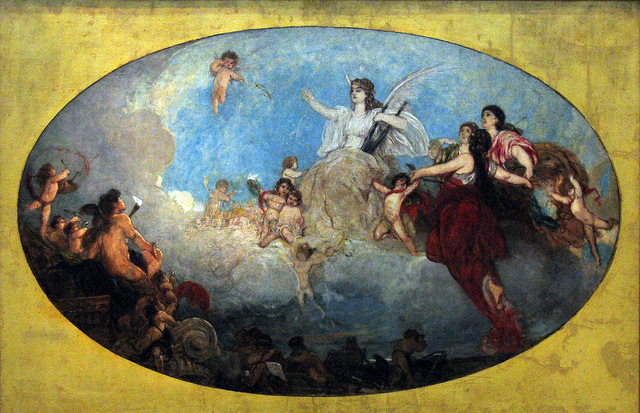 Systems thinking seems to be crossing my path these days. Or, is it perhaps my current mindset that causes me to process everything I see or read with an eye toward this concept? In any case, in the past week, I have come across three unconnected items that got me thinking again about the value of a varied, liberal arts education, one that encourages broad systems approaches:
Systems thinking seems to be crossing my path these days. Or, is it perhaps my current mindset that causes me to process everything I see or read with an eye toward this concept? In any case, in the past week, I have come across three unconnected items that got me thinking again about the value of a varied, liberal arts education, one that encourages broad systems approaches:
- On my last transatlantic flight, I watched a TED talk by Bran Ferren called “To create for the ages, lets combine art and engineering”.
- In Fast Company, I read the following article about tech company CEOs who look for employees with liberal arts degrees
- Then, I saw a piece by columnist Simon Kuper in the Financial Times about language learning.
How exactly do I link each of these things to each other and to systems thinking? Well, an important part of systems thinking is about questioning, about learning to think with a wide variety of points of reference, and about being open to seeing the world through different eyes.
As I have written here before, systems approaches are about learning to learn from our life experience, and understanding how to connect the various elements of that experience. Studying a wide variety of subjects, and challenging ourselves to learn new things, teaches our minds the agility that comes from seeing the world in new and varied ways. In addition, studying material that takes us in a multiple directions simply leaves us with more dots to connect, more mental resources to apply to all our endeavors.
Beyond an education that exposes us to a diverse range of subjects, I am convinced that everyone’s education should include achieving reasonable proficiency in at least one foreign language, and also learning to program in at least one computer language. Computer programming teaches one to understand a complex system and to solve problems of logic. Mastering a foreign language expands a person’s horizons by lending new perspectives. Language learning is more than linguistic; it provides a window on a different culture’s way of thinking and organizing the world. It opens one’s mind onto a new system of thought.
Combining art with science, engineering with design: In Ferren’s talk, he marvels at the Pantheon, the remarkable architectural achievement of ancient Rome, which he discovered when visiting Italy with his parents as a young boy. The visit was a turning point of his young life, as it began to define his beliefs about how great creative projects happen. Such monumental works, he feels, are only possible when leaders and teams are capable crossing the boundaries of art, engineering, science and design.
This concept of crossing boundaries when designing and building things brings to mind my recent thoughts about Steve Jobs’ vision for developing products (see my blog posts from May 8-22). At the very foundation of the former Apple CEO’s genius was an ability to seamlessly bridge the worlds of art and technology. As he once stated in 2010: “It’s in Apple’s DNA that technology alone is not enough. It’s technology married with liberal arts, married with the humanities, that yields the results that make our hearts sing.”
Ferren laments the fact that modern education asks us to choose a path that is either science or the humanities, but not both. His young life had been influenced by his parents, accomplished artists, but also by engineer uncles who taught him about taking things apart in an effort to understand how they work. In our schools, though, science and the arts are most often treated as separate worlds, and Ferren’s teachers told him that he had to get serious and focus on one or the other.
Throughout history many of the best minds have enjoyed crossing boundaries. Consider “polymath” inventors of the past, such as Leonardo Da Vinci, Michelangelo, Benjamin Franklin, or our era’s Steve Jobs. Their expertise spanned a number of different subject areas; as such, they could draw on complex bodies of knowledge to solve specific problems. It is when two or more realms are combined that humans can create the wondrous works that can not be done in either domain alone.
To me, it is no surprise, as Fast Company reports, that numerous tech company CEOs today favor recruiting employees with liberal arts educations. Like the polymaths of the Renaissance and the Enlightenment, the best students will have educations that encourage them to connect different forms of thinking from the worlds of art and science. It is likely that these people, whose education exposes them to a variety of fields, will be better at systems thinking and problem solving.
Image: Flickr user Tilemahos Efthimiadis
